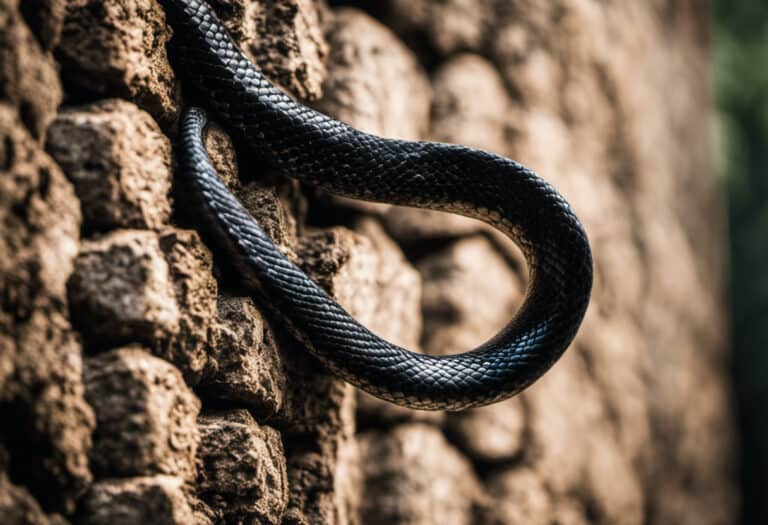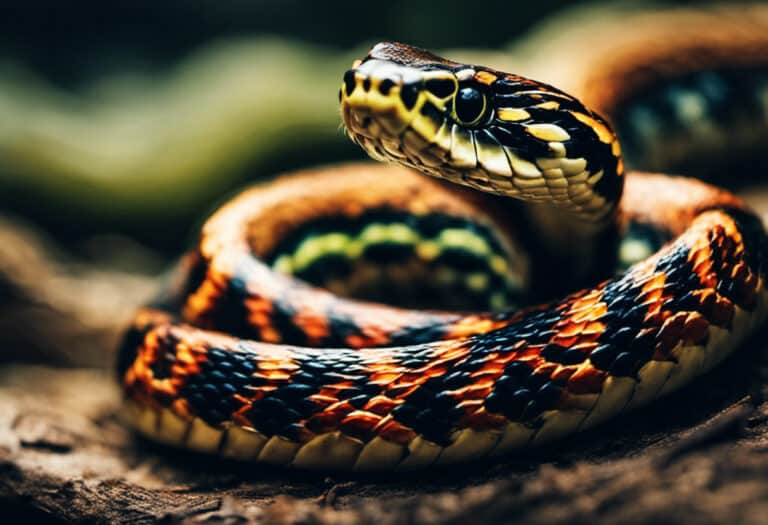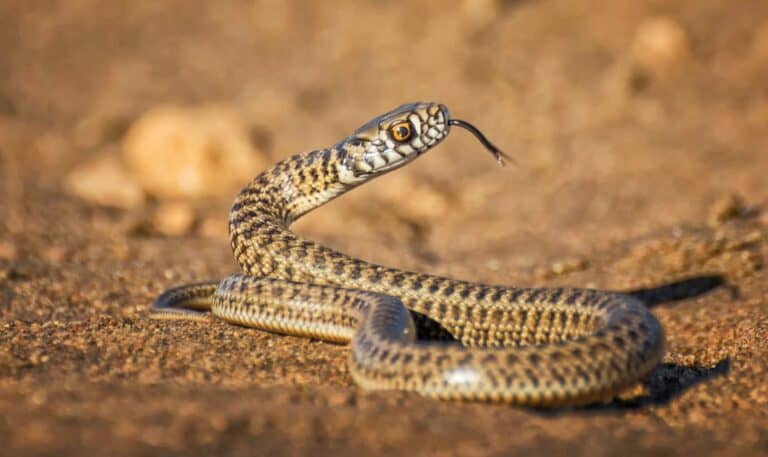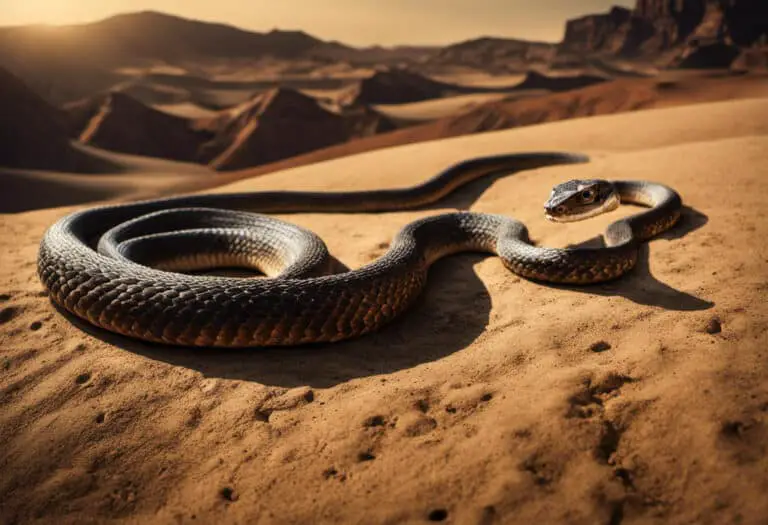How Do Snake Digest Food?
Have you ever wondered how snakes manage to digest their prey? Prepare to be amazed as we delve into the intricate world of snake digestion.
From the moment a snake captures its food, to the final absorption of nutrients, every step in the process is finely tuned for maximum efficiency.
Discover the unique adaptations in their oral and venom glands, the evolutionary changes in their teeth, and the vital role played by each organ in their digestive system.
Get ready to unravel the mysteries of snake digestion and gain a deeper understanding of these remarkable creatures.
Key Takeaways
- Snakes have adaptations in their oral glands and venom glands to immobilize and swallow prey.
- The teeth of snakes have evolved for capturing and immobilizing prey, with venomous snakes having grooved or tubular teeth for venom injection.
- The esophagus in snakes is long and aids in swallowing large prey through peristaltic movement.
- The stomach in snakes is where most digestion occurs, with digestive enzymes and gastric juices breaking down proteins.
Adaptations in the Oral Glands and Venom Glands
The venomous snakes have modified labial glands that serve as poison glands, which are located on the sides of their head and neck. These oral gland adaptations in venomous snakes play a crucial role in their survival and predation.
The venom gland structure and function are highly specialized to deliver potent toxins to their prey. The venom is produced and stored within these glands, which are connected to the snake’s fangs through ducts in their modified maxillary teeth.
When the snake strikes and bites its prey, the venom is injected through the hollow fangs, allowing for rapid immobilization and digestion of the prey.
This venomous adaptation in snakes is a powerful tool that aids in capturing and subduing their prey, providing them with the freedom to feed and survive in their natural habitat.
Evolutionary Changes in the Teeth of Snakes
You may be interested to know that the teeth of snakes have evolved over time to aid in capturing and immobilizing their prey. These dental modifications are evolutionary adaptations that have allowed snakes to become efficient predators.
Snakes have pleurodont dentition, which means their teeth are attached to the sides of their jaws.
Venomous snakes have specialized grooved or tubular teeth that are used for venom injection. Vipers, in particular, have large retractable fangs called solenoglyphous teeth. These teeth can be folded back when not in use and are capable of injecting venom into their prey.
These evolutionary changes in the teeth of snakes have played a crucial role in their ability to capture and immobilize prey, ensuring their survival in the wild.
Anatomy and Function of the Esophagus in Snakes
Imagine a long, elastic tube that covers up to half of your body, allowing you to swallow prey whole and transport it towards your stomach – that’s the anatomy and function of the esophagus in snakes.
The esophagus in snakes has evolved specific adaptations to facilitate the unique process of swallowing prey whole. Here are five key features of esophageal adaptations in snakes:
- Elasticity: The esophagus is highly elastic, allowing snakes to accommodate large prey within their bodies.
- Internal Folds: The esophagus contains internal folds that aid in swallowing large prey whole, without the need for chewing.
- Peristaltic Movement: The esophagus utilizes peristaltic movement, a rhythmic contraction and relaxation of the muscles, to propel the swallowed prey towards the stomach.
- Transport Function: The esophagus acts as a transportation pathway, ensuring that the swallowed prey reaches the stomach efficiently.
- Digestive Role: In addition to transportation, the esophagus also plays a role in the digestion process, preparing the prey for further breakdown in the stomach.
With these esophageal adaptations and the peristaltic movement, snakes are able to efficiently consume and digest their prey, showcasing the remarkable freedom they’ve in their unique feeding strategies.
Role of the Stomach in Snake Digestion
The stomach plays a crucial role in the digestion process of snakes.
As a j-shaped organ, it’s where most digestion occurs.
The stomach’s cells secrete digestive enzymes and gastric juices that break down proteins, facilitating the initial breakdown of food.
Stomach Acid Secretion
The snake’s highly acidic stomach environment, with pH levels as low as 1, aids in breaking down proteins and killing potential pathogens in the prey. The gastric acid secretion is regulated by gastric acid regulation and plays a vital role in the snake’s digestive process.
Here are five key points to understand about stomach acid secretion in snakes:
- The high acidity of the snake’s stomach helps to break down proteins into smaller peptides and amino acids, which are easier to absorb.
- The low pH also acts as a defense mechanism, killing potential pathogens that may be present in the prey.
- The snake’s stomach lining is protected from the corrosive effects of the acid by a thick layer of mucus.
- The snake’s stomach acid production increases significantly after a meal, aiding in the digestion process.
- The regulation of stomach acid secretion is influenced by various factors, including the presence of food and hormonal signals.
The snake’s highly acidic stomach environment is crucial for efficient digestion and nutrient absorption efficiency.
Digestive Enzyme Production
To break down the different types of nutrients, your stomach produces a variety of digestive enzymes. These enzymes play a crucial role in the digestion process by breaking down proteins, fats, and carbohydrates into smaller molecules that can be easily absorbed by your body.
The production of digestive enzymes is regulated by various factors, including the presence of food and hormonal signals. This regulation ensures that the enzymes are released at the right time and in the right amounts for efficient digestion.
Once the food is broken down, the nutrients are absorbed in the small intestines. The small intestines have a large surface area to maximize nutrient absorption efficiency.
Any undigested material is then eliminated from your body.
Overall, the production of digestive enzymes and the efficient absorption of nutrients are vital for maintaining a healthy digestive system.
Nutrient Absorption Process
Now let’s delve into the fascinating process of nutrient absorption in snakes. As a snake, your digestive system is specifically adapted to efficiently extract nutrients from your meals. Here are some key points to understand:
- The lining of your small intestine has a large surface area, allowing for maximum nutrient absorption efficiency.
- The absorbed nutrients, such as amino acids, fatty acids, and simple sugars, are transported into your bloodstream.
- These nutrients are then distributed to various tissues and organs, providing the necessary energy for your body’s functions.
- Your digestive system has undergone adaptations to optimize nutrient absorption, ensuring you can make the most of your meals.
- These adaptations include the presence of specialized enzymes, such as proteases, lipases, and amylases, to break down proteins, fats, and carbohydrates, respectively.
Through these digestion adaptations and your efficient nutrient absorption process, you’re able to thrive in your environment and sustain your energy requirements.
Anatomy and Function of the Small Intestines and Large Intestines in Snakes
In snakes, the small intestines, which are divided into three regions (duodenum, ileum, and jejunum), and the large intestines, which are the least muscular and most thin-walled structure, play a crucial role in the absorption of nutrients.
The small intestines are responsible for the majority of nutrient absorption in snakes. The duodenum receives digestive enzymes from the liver and pancreas, which aid in the breakdown of proteins, fats, and carbohydrates.
The ileum and jejunum have a large surface area lined with specialized cells called enterocytes, which absorb the digested nutrients into the bloodstream.
The large intestines, although less involved in nutrient absorption, play a role in water absorption and the formation of feces.
The efficient absorption of nutrients in the snake’s intestines is essential for their survival and energy production.
Snake Digestive System
The snake’s digestive system is a marvel of efficiency and adaptation. From the moment prey enters the mouth, the snake’s specialized jaws and elastic esophagus work together to facilitate swallowing and accommodate large prey.
The stomach’s high acidity and production of digestive enzymes break down proteins, while the small intestines absorb nutrients into the bloodstream. Through these remarkable adaptations, the snake’s digestive system ensures maximum energy extraction from its meals.
Efficiency of Digestion
You may be surprised to learn that snakes have a highly efficient digestive system, allowing them to extract maximum energy from their meals. Here are some key factors that contribute to the efficiency of snake digestion:
- The role of the pancreas: The pancreas is a specialized organ in the snake’s digestive system that produces digestive enzymes. These enzymes aid in the breakdown of nutrients, such as proteins, fats, and carbohydrates, ensuring efficient absorption.
- Nutrient absorption: Snakes have a well-developed small intestine with a large surface area. This allows for effective absorption of nutrients into the bloodstream, ensuring that the snake can extract the maximum amount of energy from its meals.
- Digestive enzymes: Snakes produce a variety of digestive enzymes, including proteases, lipases, and amylases, that break down proteins, fats, and carbohydrates. These enzymes are crucial for efficient digestion and nutrient absorption.
- Regurgitation of undigested material: Any undigested material, such as bones or fur, is regurgitated as a pellet called a ‘casting.’ This process allows the snake to eliminate indigestible material and maximize nutrient absorption.
- Role of stomach acid: Snakes have a highly acidic stomach environment, with pH levels as low as 1. This high acidity helps break down proteins and kill potential pathogens in the prey, further enhancing the efficiency of digestion.
Overall, the efficiency of nutrient absorption and the role of the pancreas in digestion contribute to the highly efficient digestive system of snakes, allowing them to extract maximum energy from their meals.
Adaptations for Swallowing
To swallow your prey whole, you rely on your flexible jaws and an elastic esophagus that can accommodate large meals. These adaptations for prey capture are essential for your survival in the wild.
Your jaws can stretch wide open, allowing you to engulf your prey effortlessly. The elastic esophagus is another remarkable adaptation that allows you to swallow prey much larger than your head. This unique feature enables you to consume meals that would be impossible for other animals.
The efficiency of your digestive system is also critical for your success as a predator. Your stomach produces highly acidic gastric juices that break down proteins and kill potential pathogens in your prey. This helps extract maximum energy from your meals.
Overall, your adaptations for swallowing and efficient digestive system make you a formidable predator in the animal kingdom.
Swallowing Mechanism
Snakes use their specialized jaws to stretch their mouths and engulf prey, allowing them to swallow large prey whole. The swallowing mechanism of snakes involves several key adaptations:
- The snake’s esophagus is highly elastic, allowing it to accommodate large prey.
- Snakes have a ‘walk and drag’ method of swallowing, using their body muscles to push the prey down their throat.
- The snake’s trachea has a specialized structure called the glottis, which can close off to prevent food from entering the lungs.
- Snakes have a highly acidic stomach environment, with pH levels as low as 1. The high acidity helps break down proteins and kill potential pathogens in the prey.
- The snake’s stomach lining is protected from the corrosive effects of the acid by a thick layer of mucus.
These adaptations in the swallowing mechanism, including the elasticity of the esophagus and the low pH of the gastric acid, ensure efficient digestion and absorption of nutrients in snakes.
Frequently Asked Questions
How Do Snakes Capture Their Prey?
Snakes capture their prey using various hunting techniques. They rely on venom to immobilize their prey, injecting it through grooved or tubular teeth. Venom glands in the snake’s head aid in this process.
What Is the Purpose of the Snake’s Glottis?
The glottis in a snake serves a dual purpose. It is essential for respiration, allowing air to pass into the lungs, and it also plays a crucial role in swallowing by closing off the trachea to prevent food from entering.
How Does the Snake’s Stomach Protect Itself From the High Acidity?
The snake’s stomach lining has a thick layer of mucus that protects it from the high acidity of gastric acid. This mucus acts as a barrier, preventing the acid from corroding the stomach walls and maintaining its integrity.
What Are the Different Types of Digestive Enzymes Produced by Snakes?
Snake digestive enzymes play a crucial role in the snake digestion process. These enzymes, such as proteases, lipases, and amylases, break down proteins, fats, and carbohydrates respectively. They aid in the efficient digestion and absorption of nutrients.
What Happens to Undigested Material in a Snake’s Digestive System?
Undigested material in a snake’s digestive system is typically passed out of the body through the cloaca or regurgitated if necessary. This allows the snake to maintain a clean and efficient digestive system.
Conclusion
In conclusion, the intricate process of snake digestion is a marvel of nature’s engineering. Despite their unique adaptations and specialized anatomy, snakes still face the challenge of consuming prey larger than themselves. However, their highly efficient swallowing mechanism allows them to overcome this obstacle.
While some may find snakes intimidating or repulsive, their remarkable ability to digest food should evoke a sense of awe and admiration for these incredible creatures. Understanding snake digestion allows us to appreciate the wonders of the natural world and the diverse strategies organisms have developed to survive and thrive.






